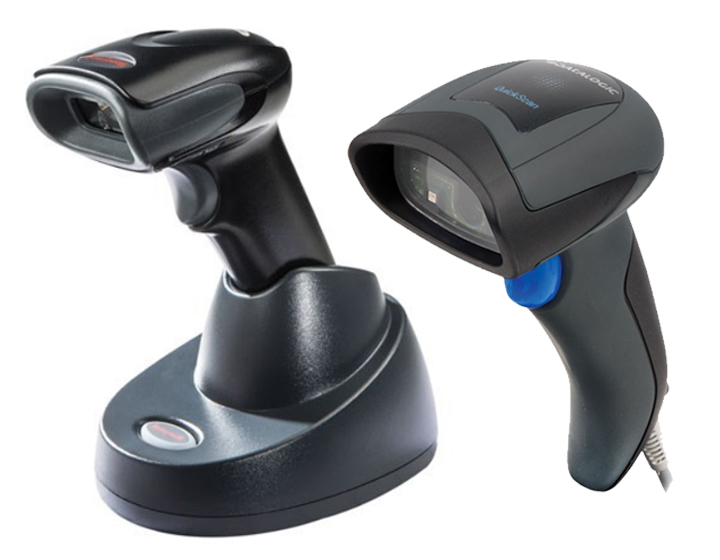Barcode equipment is the unsung hero of streamlined business operations, playing a crucial role in tasks ranging from efficient inventory management to facilitating seamless point-of-sale transactions. As businesses increasingly rely on these technologies, the need for careful consideration when purchasing barcode scanners, printers, and related equipment becomes paramount. This blog post aims to guide businesses through key factors to consider, ensuring they make informed decisions tailored to their unique needs.
- Understanding Specific Business Needs:
- Types of Barcode Scanners and Their Uses:
- Compatibility with Existing Systems:
- Durability and Environmental Considerations:
- Ease of Use and Ergonomics:
- Scanning Capabilities and Speed:
- Print Quality and Speed in Barcode Printers:
- Budget and Cost Considerations:
- After-Sales Support and Warranty:
- Conclusion:
Understanding Specific Business Needs:
Before venturing into the market’s vast array of options, businesses must conduct a thorough self-assessment. Understanding specific requirements such as the volume of scanning, types of products, and the operating environment is crucial. Tailoring the choice of barcode equipment to these specifics ensures optimal performance and a seamless integration into existing processes. For instance, a warehouse with high-volume scanning needs might benefit from a robust handheld scanner, while a retail setting may find a wireless scanner more convenient for point-of-sale transactions.
Types of Barcode Scanners and Their Uses:
The world of barcode scanners is diverse, offering various types, each designed for specific use cases. Handheld scanners provide mobility and flexibility, making them ideal for retail environments. Stationary scanners, on the other hand, are suitable for fixed-point scanning in settings like manufacturing lines. Wired scanners offer reliability, ensuring a constant power source, while wireless scanners enhance flexibility but require battery management. Understanding the advantages and limitations of each type empowers businesses to make choices aligned with their operational needs. You can even get refurbished barcode equipment so you can get a better model at a more affordable price.
Compatibility with Existing Systems:
Investing in barcode equipment that seamlessly integrates with existing software and hardware systems is not just a convenience but a necessity. This involves checking system requirements and considering connectivity options like USB, Bluetooth, or Wi-Fi. Whether it’s ensuring compatibility with the point-of-sale software or integrating with an inventory management system, a harmonious connection prevents operational hiccups and boosts overall efficiency.
Durability and Environmental Considerations:
For businesses operating in challenging environments, the durability of barcode equipment takes center stage. Factors such as resistance to dust, moisture, and the ability to withstand drops or rough handling become crucial considerations. A rugged scanner designed to thrive in harsh conditions ensures longevity and minimizes the risk of equipment failure, ultimately contributing to the overall resilience of the business operation.
Ease of Use and Ergonomics:
User-friendliness and ergonomic design are often underestimated but play a vital role in the efficiency of barcode equipment. Employees who frequently use these devices will appreciate features such as lightweight design, comfortable grips, and intuitive interfaces. Ensuring that the equipment is not only functional but also easy and comfortable to use contributes to increased productivity and reduces the risk of user fatigue.
Scanning Capabilities and Speed:
The scanning capabilities of barcode equipment are at the core of their functionality. Businesses must consider the ability to read different barcode formats and scan from various distances and angles. The importance of fast and accurate scanning cannot be overstated, especially in environments where efficiency is key. Whether it’s swiftly scanning products at the checkout or managing high-throughput logistics, the equipment’s scanning capabilities directly impact operational speed and accuracy.
Print Quality and Speed in Barcode Printers:
For businesses requiring barcode printers, the focus shifts to print quality and speed. Barcode labels serve as a critical link in the supply chain, and their legibility is paramount. This section discusses different printing technologies like thermal transfer and direct thermal printing, outlining their suitability for various applications. Choosing a printer that aligns with the business’s needs ensures that barcode labels are not just generated quickly but also with the required quality and durability.
Budget and Cost Considerations:
While functionality is key, businesses must also navigate the budgetary landscape. This section highlights the importance of budget considerations, emphasizing the need to balance the cost of the equipment with its features and long-term reliability. It explores the potential for long-term savings through energy efficiency, durability, and reduced maintenance needs. Striking the right balance ensures that businesses make a cost-effective investment that aligns with their financial constraints while delivering value over the long run.
After-Sales Support and Warranty:
The journey doesn’t end with the purchase; robust after-sales support is equally vital. This section stresses the significance of after-sales support, including warranty coverage, responsive customer service, and the availability of spare parts. A reliable support system ensures minimal downtime and quick resolutions to any technical issues that may arise. Choosing a reputable supplier that stands behind their product is an investment in the ongoing operational efficiency of the business.
Conclusion:
In conclusion, purchasing barcode equipment is not a one-size-fits-all endeavor. The key lies in aligning the purchase with specific business needs and operational contexts. By thoroughly understanding the volume of scanning, environmental challenges, compatibility with existing systems, and other crucial factors, businesses can make informed decisions that optimize their investment in barcode technology. This comprehensive guide serves as a roadmap, urging businesses to conduct thorough research and possibly consult with experts, ensuring their barcode equipment enhances efficiency and contributes to the overall success of their operations.












